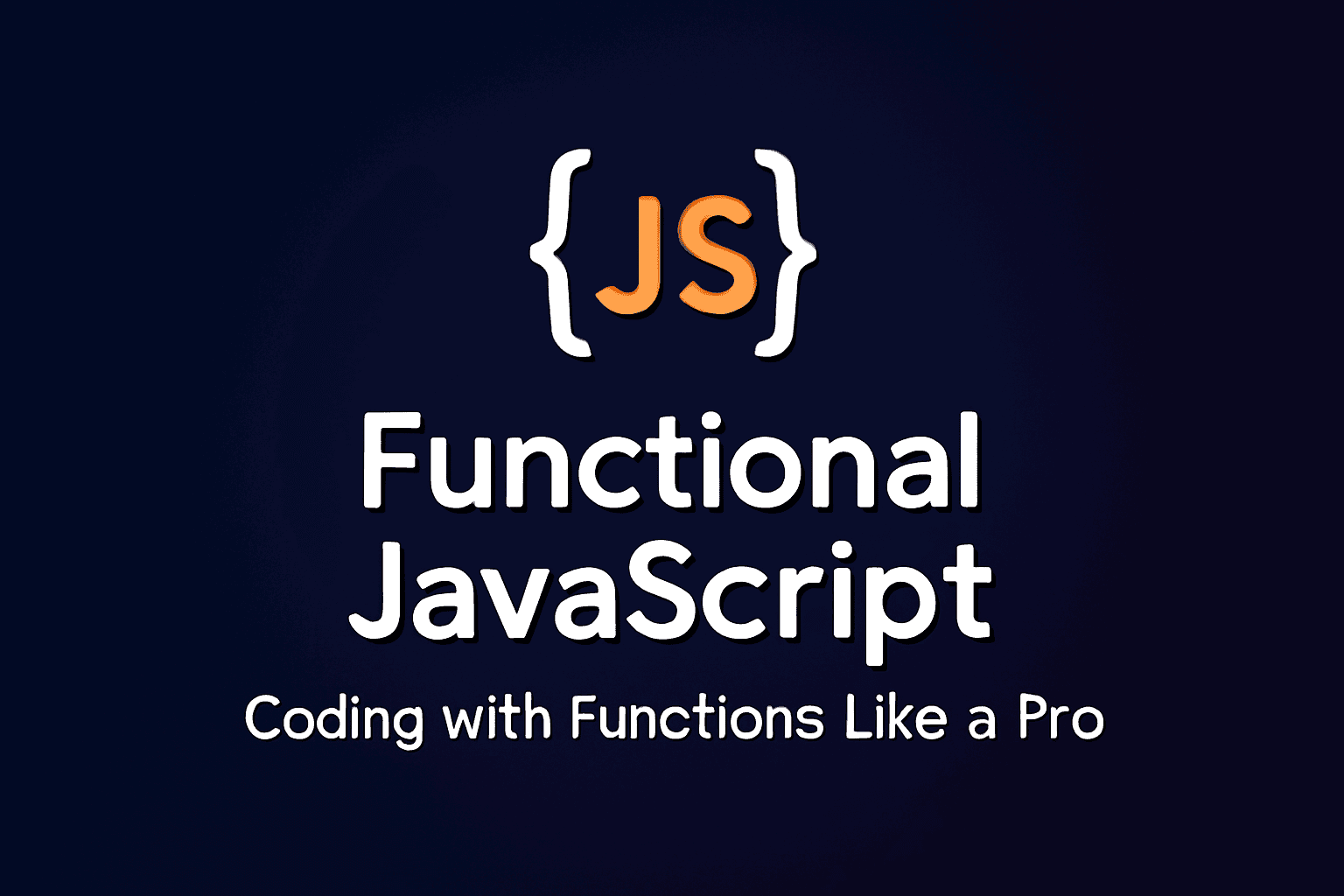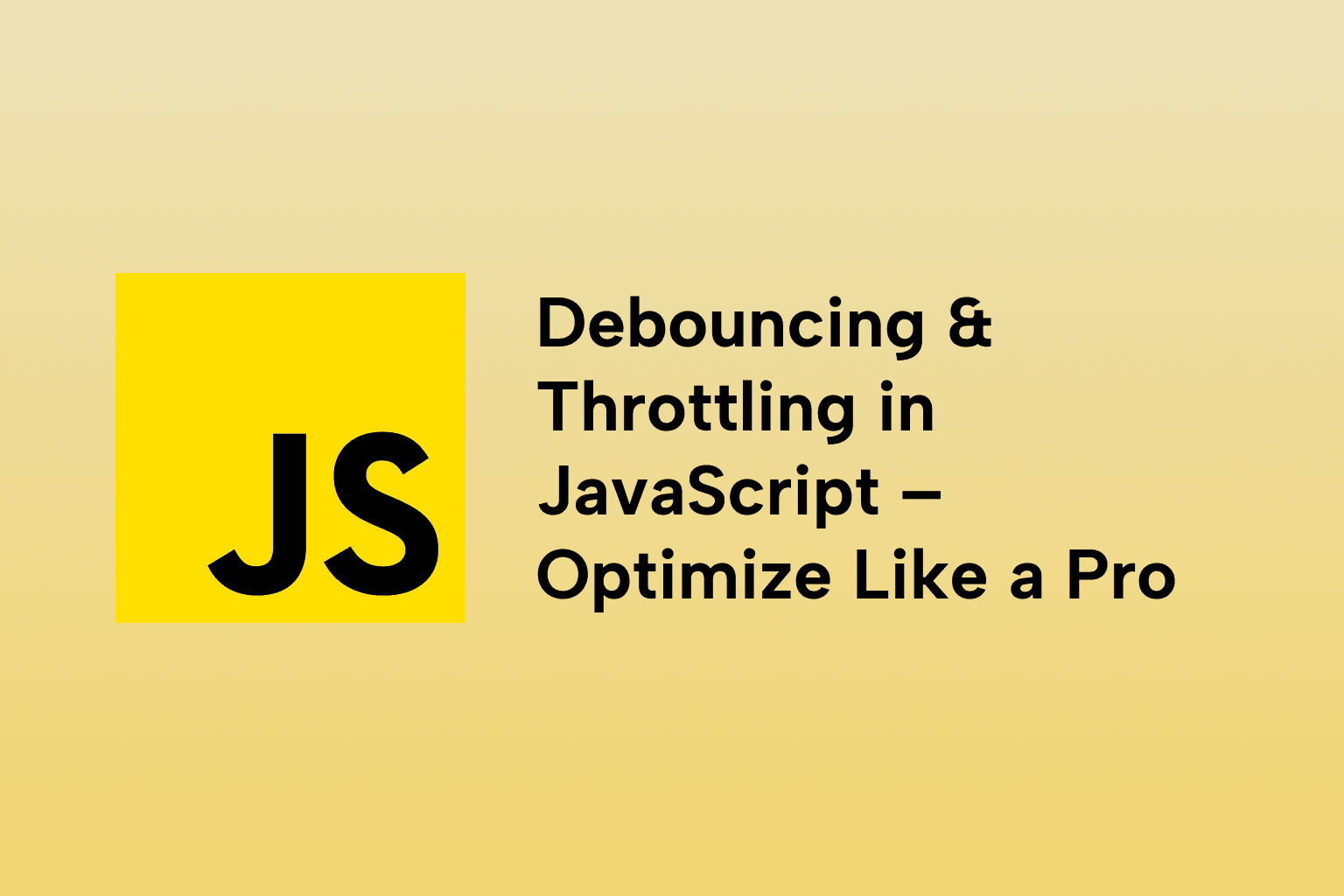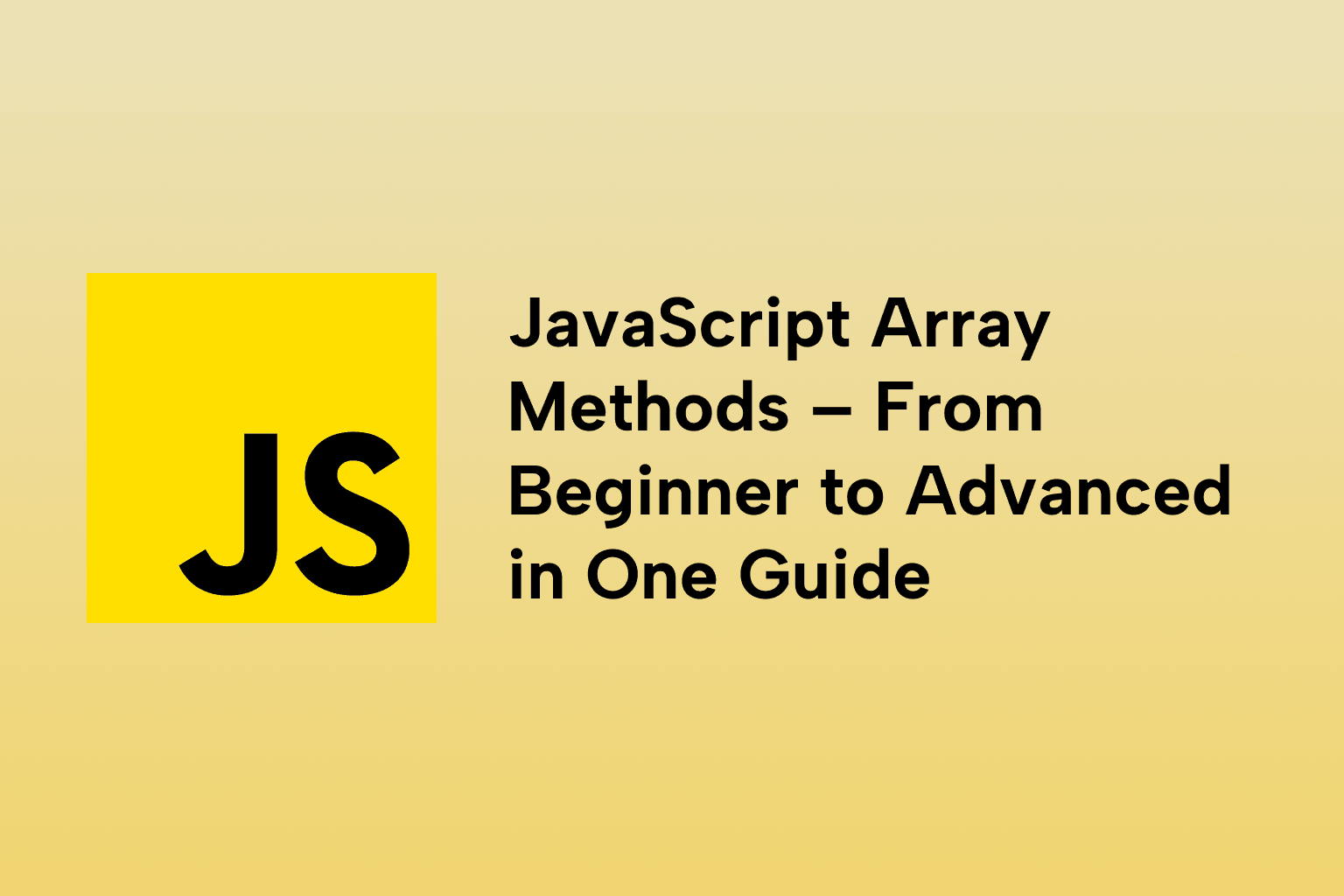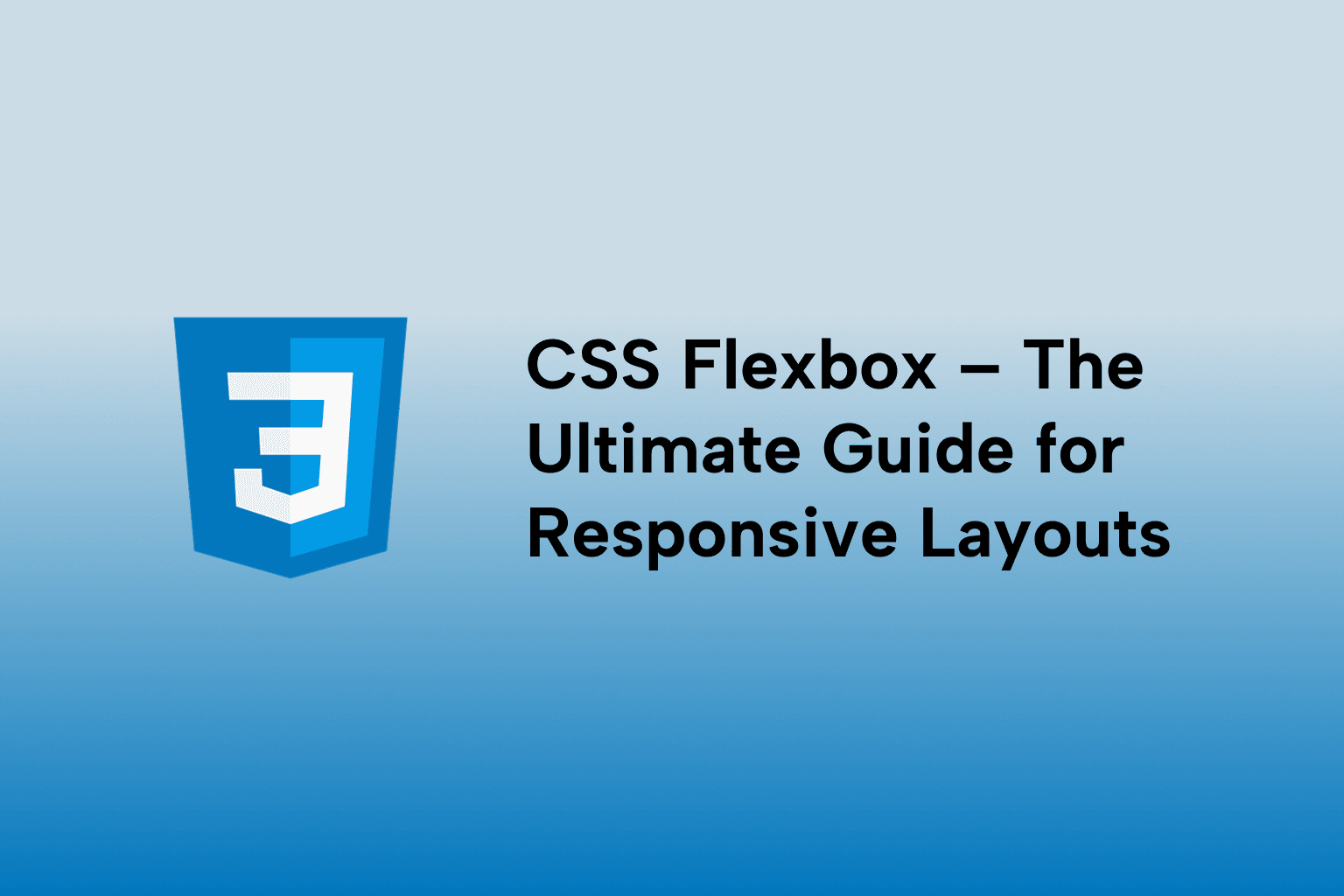Functional JavaScript: Coding with Functions Like a Pro
 Emma George
Emma George
TABLE OF CONTENTS
1 . What is Functional Programming?
2 . Why Functional Programming in JavaScript?
3 . Core Principles of Functional Programming
4 . Pure Functions
5 . First-Class and Higher-Order Functions
6 . Immutability
7 . Recursion over Loops
8 . Closures and Function Scope
9 . Currying and Partial Application
10 . Function Composition
11 . Declarative vs Imperative Programming
12 . Avoiding Side Effects
13 . Functional Tools in JavaScript (map, filter, reduce)
14 . Leveraging Lodash and Ramda
15 . Real-World Functional JavaScript Examples
16 . FP in Modern Frameworks
Conclusion
In the ever-evolving world of JavaScript development, there's a growing movement toward writing cleaner, more predictable, and more maintainable code. At the center of this movement is functional programming (FP), a powerful paradigm that treats computation as the evaluation of mathematical functions and avoids changing state or mutable data.
While JavaScript isn't a purely functional language, it supports many functional programming features. This makes it the perfect playground to harness the strengths of functional programming without giving up the flexibility of imperative and object-oriented styles.
In this comprehensive guide, we’ll explore how to think functionally in JavaScript. From the basics of pure functions to more advanced concepts like currying and composition, this blog will equip you with the knowledge and tools you need to code like a functional programming pro.
1 . What is Functional Programming?
Functional programming is a declarative paradigm where programs are constructed using pure functions, without shared state, mutable data, or side effects.
Its key characteristics include:
- Functions as the main building blocks
- No mutable data
- Stateless computations
Focus on "what to do" rather than "how to do it"
2 . Why Functional Programming in JavaScript?
JavaScript inherently supports many functional features:
- Functions are first-class citizens
- Functions can be passed around and returned
- Support for closures
- Array methods like map, filter, reduce
- Arrow functions provide cleaner syntax
Functional programming improves:
- Readability
- Testability
- Modularity
- Debugging
3 . Core Principles of Functional Programming
The foundational principles include:
- Pure functions
- Immutability
- Higher-order functions
- Function composition
- Avoiding side effects
- Declarative syntax
- Recursion over iteration
4 . Pure Functions
A pure function:
- Always returns the same output for the same input
- Has no side effects (doesn’t modify external state)
Example:
// Pure
function add(a, b) {
return a + b;
}
// Impure (side effect: modifying global state)
let total = 0;
function addToTotal(val) {
total += val;
}
Pure functions are easy to test and reason about.
5 . First-Class and Higher-Order Functions
JavaScript treats functions as first-class citizens.
First-Class:
- Can assign functions to variables
- Can pass them as arguments
- Can return them from other functions
Higher-Order:
- Takes one or more functions as arguments
- Returns a function
Example:
function greet(name) {
return `Hello, ${name}`;
}
function loud(fn) {
return function(name) {
return fn(name).toUpperCase();
};
}
const shoutGreet = loud(greet);
console.log(shoutGreet("John")); // HELLO, JOHN
6 . Immutability
Immutability means data cannot be changed after it's created.
JavaScript allows immutability using:
- Object.freeze()
- Spread operators
- Libraries like Immer
Example:
const user = { name: "Alice" };
const updatedUser = { ...user, name: "Bob" };
Avoid direct mutation:
// Bad
user.name = "Bob";
7 . Recursion over Loops
In FP, recursion is favored over loops due to immutability.
Example:
function factorial(n) {
if (n <= 1) return 1;
return n * factorial(n - 1);
}
Tail-call optimization (TCO) can help, but not all JS engines support it yet.
8 . Closures and Function Scope
Closures are the foundation of many FP techniques:
function multiplier(factor) {
return function(x) {
return x * factor;
};
}
const double = multiplier(2);
console.log(double(5)); // 10
Closures encapsulate scope, which is a key for encapsulation in FP.
9 . Currying and Partial Application
Currying: Transforming a function with multiple arguments into a sequence of functions.
Example:
function add(a) {
return function(b) {
return a + b;
};
}
const add5 = add(5);
console.log(add5(10)); // 15
Libraries like Ramda and Lodash have curry functions for convenience.
Partial Application: Fixing a few arguments and generating a new function.
10 . Function Composition
Function composition chains multiple functions together:
const compose = (f, g) => (x) => f(g(x));
const trim = str => str.trim();
const toLower = str => str.toLowerCase();
const sanitize = compose(toLower, trim);
console.log(sanitize(" Hello World ")); // "hello world"
Function composition leads to elegant and declarative code.
11 . Declarative vs Imperative Programming
Imperative: Step-by-step instructions
let numbers = [1, 2, 3];
let doubled = [];
for (let i = 0; i < numbers.length; i++) {
doubled.push(numbers[i] * 2);
}
Declarative:
let doubled = numbers.map(x => x * 2);
Declarative code is shorter, easier to read and reason about.
12 . Avoiding Side Effects
Side effects make code unpredictable and harder to test.
Side effects include:
- Mutating variables
- Logging to console
- Fetching API data
- Changing DOM
Functional code avoids side effects or isolates them in specific layers (like Redux reducers).
13 . Functional Tools in JavaScript (map, filter, reduce)
- map: Transforms data
- filter: Filters data
- reduce: Aggregates data
Example:
const users = [
{ name: "Alice", age: 30 },
{ name: "Bob", age: 24 },
{ name: "Charlie", age: 35 }
];
const userNames = users.map(user => user.name);
const adults = users.filter(user => user.age >= 30);
const totalAge = users.reduce((sum, user) => sum + user.age, 0);
14 . Leveraging Lodash and Ramda
Lodash and Ramda provide functional utilities for:
- Currying
- Deep cloning
- Function composition
- Data transformation
- Ramda is designed specifically for FP and uses auto-currying.
Example with Ramda:
const R = require('ramda');
const greet = R.compose(R.toUpper, R.trim);
console.log(greet(" hello ")); // HELLO
15 . Real-World Functional JavaScript Examples
Form Validation:
const isNotEmpty = str => str.trim().length > 0;
const isEmail = str => str.includes('@');
const validateForm = (form) => isNotEmpty(form.name) && isEmail(form.email);
Reducers in Redux:
const counterReducer = (state = 0, action) => {
switch (action.type) {
case "INCREMENT": return state + 1;
case "DECREMENT": return state - 1;
default: return state;
}
};
Pipelines:
const pipe = (...fns) => (x) => fns.reduce((v, f) => f(v), x);
16 . FP in Modern Frameworks
React encourages functional thinking:
- Pure components
- Hooks (useEffect, useState) rely on closures
- Redux enforces immutable updates
Frameworks like Svelte and SolidJS also embrace reactive functional patterns.
17 . Pros and Cons of Functional Programming in JavaScript
Pros:
- Better readability
- Fewer bugs due to pure functions
- Easier unit testing
- Better modularity
Cons:
- Steeper learning curve
- Verbosity with currying/closures
- Debugging deeply composed functions can be tricky
- Sometimes less performant than imperative code
Conclusion
Functional programming isn't just a trend—it's a mindset. By thinking in terms of functions, transformations, and data flows, you unlock a new level of clarity and expressiveness in your code.
JavaScript gives you the best of both worlds: the power to write object-oriented and functional code. As applications grow in complexity, embracing functional programming principles helps you write cleaner, more modular, and more scalable code.
To recap:
- Focus on pure, stateless functions
- Embrace immutability
- Compose small reusable functions
- Use built-in methods like map, reduce, and filter
- Learn to use closures, currying, and higher-order functions effectively
Mastering functional programming in JavaScript isn’t just about learning new syntax—it’s about changing the way you think about writing software.
Once you go functional, you’ll wonder how you ever lived without it.
Would you like this content exported as a downloadable markdown file or turned into a design-friendly blog template?

Emma George
Software Engineer
Senior Software Engineer



